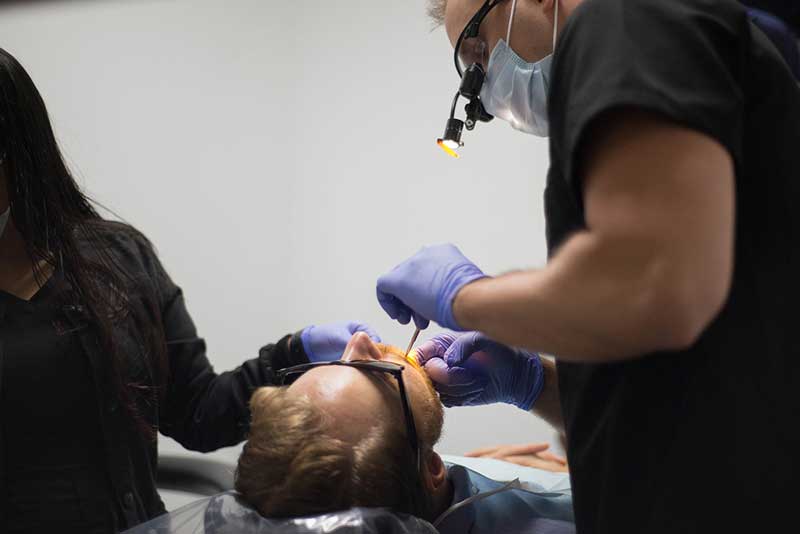If a person has a huge hole, decayed or damaged tooth, then your dentist gives one of the two options to fix their tooth a root canal treatment or extraction of your tooth. The severity of damaged teeth and extended tooth problems usually determines the best option for the patients. Most time, your dentist considers your opinion regarding your treatment and suggests what is best for you.
Root Canal Vs. Extraction
What is a Root Canal Procedure?
Injuries or chronic infections can perish your tooth's blood vessels, roots, and nerve tissues.
A root canal is one of the best treatments to save your diseased teeth and retains the functionality of your tooth after infections.

A root canal treatment(RCT) is a complex procedure that begins through oral examination and diagnosis. Your dentist takes x-rays of your affected tooth and proceeds with numbing the area around your affected tooth with local anesthesia. Your dentist removes the damaged part of the tooth.
Initially, your dentist makes an opening in your tooth, then thoroughly cleans and disinfects all your root canals. Then the dentist sterilizes, rids the infections, and fills the root canal area with a substance called gutta-percha, which replaces the pulp area in the canal. In the end, your doctor uses permanent filling material as a sealant and a dental crown to help the restoration process as well as increase the durability of your filling.
What Happens in a Tooth Extraction?
Dentists consider tooth extraction the last restoration procedure when there is no way to save the tooth because you get natural teeth of the set once in your life. The dentist performs this treatment under local anesthesia, using instruments like an elevator and forceps to remove the tooth. There are two types of teeth extracted, simple and surgical procedures.
Simple tooth extractions involve numbing, tooth pulling, and dental instruments. Dentists use this procedure on loose teeth or teeth that are already mobile.
Surgical tooth extractions require a minor procedure to remove, and sometimes stitches may be needed when your dentist does not see an impacted wisdom tooth correctly. If there are fractured or half broken teeth, then only your dentist considers a surgical tooth extraction procedure.

Which procedure is More Painful – Root Canal or Tooth Extraction?
Since the dentist performs both procedures under local anesthesia, patients need not worry about unnecessary pain. In some severe and complex cases, infection minimizes local anesthesia's effect, leading to some amount of pain during the procedure. However, if dentists find any such problem, they prefer general anesthesia to perish the impact of pain.
Conclusion
If your teeth are in good condition and the dentist can save them, a root canal treatment is ideal. However, if the tooth is half broken, knocked, or cracked in structural and functional, dentists have only one option, extraction.
If you find any such dental condition, you should immediately contact an authentic and experienced dentist to recommend what is best for you. You should also not compromise your dental practices, such as brushing and flossing your teeth at least twice daily.
Article Source : https://www.healthymindz.com/whats-the-difference-between-root-canal-vs-extraction/





Comments